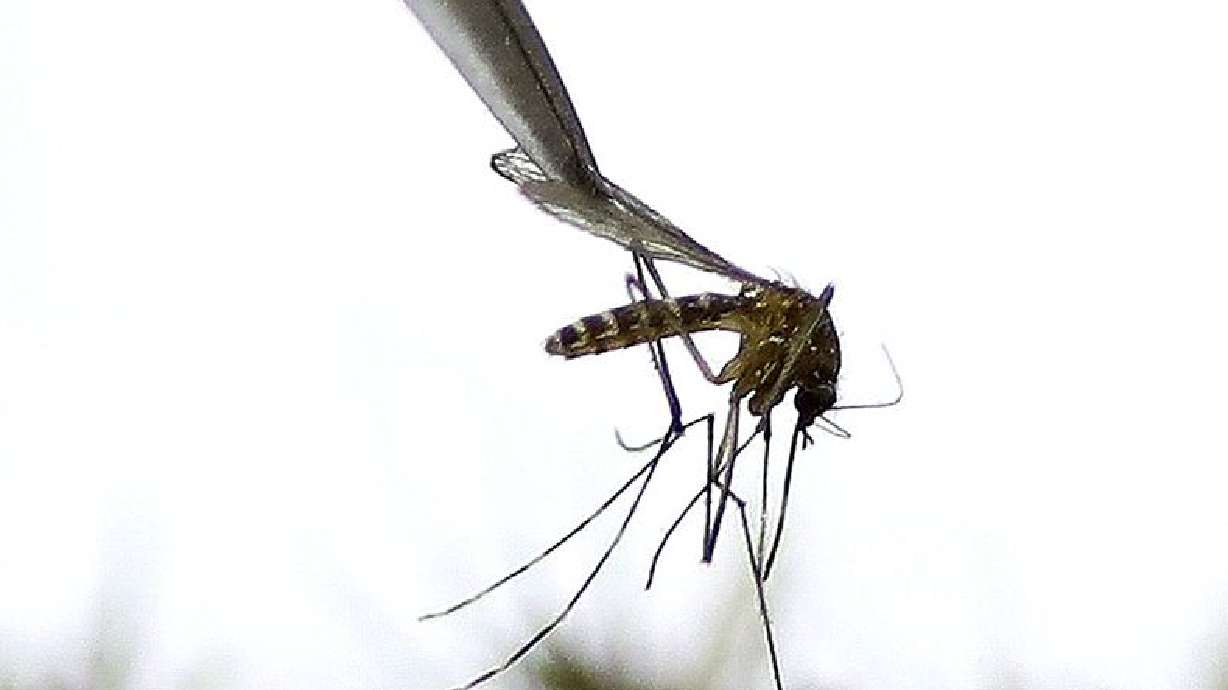I thought a bump on my forehead was just a pimple… then I got a shocking diagnosis

Emily Haley inherited her father’s fair complexion, and was diligent all her life about wearing SPF on her face and body.
She knew skin cancer was a possibility, given her parents’ history of skin cancer, but when a strange spot appeared on her forehead, she thought it was a pimple.
The spot appeared a little over a year ago and lasted for months, though Haley thought nothing of it. She figured it would go away like any other pimple eventually does. It started turning red in December 2024.
She brought it up to her dermatologist at her next visit, Dr Hooman Khorasani, a dermatologic and cosmetic surgeon based in New York. When Dr Khorasani examined the spot under a microscope, he thought it looked suspicious. He could see certain blood vessels not seen in normal acne.
After collecting a small bit of tissue and running some tests, Dr Khorasani called Haley with crushing news: the spot was basal cell carcinoma (BCC), the most common form of skin cancer. It results from specific mutations in skin cells and, while they can be sporadic, they’re generally a result of exposure to UV radiation.
Hearing the word cancer come out of her doctor’s mouth was scary, but he assured her that, because they caught the cancer early, she had an excellent prognosis.
BCC grows slowly and seldom metastasizes. When caught early, localized cases are typically curable, with a near 100 percent five-year survival rate—among the highest of all cancers.
Haley had surgery scheduled for a few weeks after her diagnosis. Dr. Khorasani would perform a Mohs micrographic surgery on her forehead, which involves removing thin layers of tissue very precisely, continually checking the layers under a microscope until all the cancerous cells have been eliminated.

A year after noticing a persistent spot, Emily Haley assumed it was just a pimple, but when it turned red in December 2024, her dermatologist, Dr. Hooman Khorasani, examined it and found abnormal blood vessels. A biopsy confirmed basal cell carcinoma (stock)
Even Haley’s doctor was hesitant to believe the small red bump was cancer. Haley was only 31, and the age group most often diagnosed with this type of cancer is 70 to 79-year-olds.
But Haley had a family history on both sides. Her mother developed the same kind of cancer in her 60s, about seven years ago, and her dad developed precancerous skin growths when he was in his 50s.
She told Women’s Health: ‘My family history combined with my alabaster skin made it feel almost unavoidable that I’d face a similar fate.
‘But in an attempt to protect myself, I stuck to my sunscreen routine, never used tanning beds, and visited a dermatologist annually for skin cancer screenings.
‘Developing basal cell carcinoma despite my good habits (and getting diagnosed decades earlier in life than my parents) came as a shock. It was a stark reminder that skin cancer can happen to anyone at any time.’
She was initially concerned about the scar that would result from the Mohs surgery. Some degree of scarring is to be expected, but as a marketing professional in the beauty industry, minimizing the signs of her cancer was important.
‘The state of my scar and the various bandages covering it naturally drew attention, but not necessarily the kind I wanted,’ she said.
‘I didn’t always feel like explaining myself or revealing that I had been dealing with cancer. However, I’m comforted by the fact that this phase in my life won’t last forever.’

The graph shows he increase in skin cancer cases over a 25 year period.
BCC is far more common than its deadly cousin melanoma, with around 5.4 million diagnoses made every year.
Generally related to sun exposure, the cancer develops when cells in the upper layer of the skin begin to divide uncontrollably, forming a pinkish patch that might be tender or itchy.
Doctors are typically able to remove it via Mohs surgery, which bumps the survival rate up to 99 percent.
It’s also becoming more common. According to the NIH, case rates have risen between 20 and 80 percent over the last 30 years, especially among the ever-growing senior population.
Dr. Khorasani continues to perform outpatient procedures to smooth out the scar, including Dermabrasion and CO₂ laser resurfacing, which remove outer skin layers and stimulate collagen.
Vascular lasers reduce redness by targeting blood vessels, while Bellafill injections fill in raised or indented scars. Botox can prevent scar stretching by relaxing nearby muscles.
Haley said: ‘Nevertheless, the healing process since the surgery hasn’t always been picture-perfect (my scar looks especially red immediately after treatments), but on good days, I’m happy to say that you’d hardly know the scar is there thanks to all the help from my doctor and his team.’
Since the scare, she has become much more diligent about protecting her skin, reapplying SPF throughout the day, wearing hats and rash guards at the beach, and visiting her dermatologist for comprehensive body exams every six months, as recommended by the American Cancer Society.

Signs of skin cancer range from innocuous to obvious, but experts warn that treating cases early is key to making sure they do not spread or further develop
The clinic she goes to uses artificial intelligence to analyze high-quality photos of her whole body to determine whether she has developed any cancerous moles. So far, she is cancer-free.
‘After months of walking around with various hats and scar coverings, I no longer worry what other people think of me or how I look,’ she said.
‘When someone asks about my scar, I’m happy to share my story. Because if opening up helps even one person catch something early, protect their skin, or feel less alone, then it’s all been worth it. And in the meantime? I’ll be rocking my favorite hat.’
Source link






